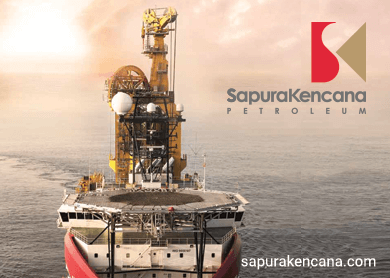
This article first appeared in The Edge Malaysia Weekly, on September 28 - October 4, 2015.
Brazil’s once thriving oil producer Petróleo Brasileiro SA (Petrobras) seems to be on a downward spiral since a money laundering and corruption scandal broke open more than a year ago.
The scandal, which has adversely affected Brazil’s economy and currency, coincided with the fall of crude oil prices and caused Standard & Poor’s Rating Services to downgrade Petrobras and Brazil’s sovereign debt to junk status earlier this month. In February, Moody’s Investors Service downgraded Petrobras’ debt to junk.
With oil prices and credit ratings down, and reports that Petrobras is cutting spending and selling US$13.7 billion worth of assets, questions have been raised about the status of SapuraKencana Petroleum Bhd’s six pipe-laying support vessels (PLSV) that are set for work in the waters of Brazil.
An industry source stresses that SapuraKencana’s contracts are firm and secure. “The contracts have firm day rates, natural hedge against inflation and there is no termination for convenience. Even though the company has been going through challenges recently, there have been no indications of any slowdown in production from Petrobras,” he says.
Note that Petrobras produced a record 2.69 million barrels of oil equivalent (boe) per day in August, which is a 3.1% increase over July and almost 1% higher than the previous 2.67 million boe per day in December 2014.
To recap, in November 2011, SapuraKencana’s 50:50 joint venture company with Seadrill Ltd, Sapura Navegacao Maritima SA (SNM), was awarded a five plus five-year US$1.4 billion contract to build and operate three PLSVs. In June 2013, SNM secured a similar contract on an eight plus eight-year call for another three PLSVs for US$2.7 billion.
“SapuraKencana has delivered three vessels (Sapura Diamante, Sapura Topazio and Sapura Onix) three months earlier than its contractual start dates and all its vessels have been accepted and put to work in Petrobras’ deepwater pre-salt fields.
The other three PLSVs — Sapura Esmerelda, Sapura Jade and Sapura Rubi — are expected to start work in Brazil in 2017.
“In terms of payments, they have been making prompt payments every 30 days on the dot,” notes the source, adding that all the six vessels are fully funded, testimony that the banks are confident of the Petrobras project.
“It is important to recognise that Brazil’s deepwater pre-salt fields are robust and viable, even in the current oil price environment. About 80% of Brazil’s fields are economically viable at crude oil prices of US$50 per barrel,” he says.
With a total value of more than US$4 billion, SapuraKencana has recognised some of the value from the early deliveries, which is still a significant amount considering that it is sitting on an order book of RM23 billion.
TA Research, in a research note, says the group’s Brazilian operations contributed about RM30 million in pre-tax profit to its first half for the financial year ending Jan 31, 2016 (1HFY2016).
In 1HFY2016, the group saw net profit fall to RM364.78 million from RM955.22 million a year earlier due to impairment provisions on its oil and gas assets. Revenue was recorded at RM5.06 billion, from RM5.14 billion. The group’s income statement showed that it registered asset provisions of RM345 million after tax during 1HFY2016.
The research house noted that Sapura Onix is expected to bump up the group’s fourth quarter.
“Margins for Brazil remain robust (earnings before interest, taxes, depreciation and amortisation at 49% and profit before tax 20%), and management declined a request for discounts from Petrobras recently,” read the note.
The research house sees the group registering a core net profit of RM1.05 billion for its full FY2016 on the back of RM8.31 billion in revenue.
It has a “buy” call on SapuraKencana with a lower target price of RM2.29 from RM3.12 previously. “We believe this is more reflective of the current downcycle, which has weighed down earnings and valuations. In addition, this represents a 10% premium to the sector’s average trough valuations during the 2006 oil price downcycle. We believe the premium is justified by SapuraKencana’s integrated and diversified operations, large asset bases and global track record,” it says.
Meanwhile, Maybank IB Research revised SapuraKencana’s FY2016 core earnings forecast by 10% to account for stronger earnings for the drilling and international engineering and construction divisions. However, it cut FY2017 and FY2018 core earnings by 5% each to account for the lower profit from its drilling operations and overall utilisation.“The oil price is likely to remain depressed, suppressed largely by the oversupply of oil in the market and muted demand outlook. SapuraKencana’s oil price outlook is for US$55 per barrel over the next three years, a realistic view that we concur with.
“While its share price has plunged 56% over a 52-week period, the grey visibility will cap interest in the stock. We do not foresee any strong catalyst that warrants an immediate rerating. For this, SapuraKencana remains a ‘hold’ with a lower sum-of-parts target price of RM2. Our services earnings pegs are based on a lower multiple of 10 times while we value its energy operations at net book value of RM1 billion,” says Maybank.
Last Wednesday, SapuraKencana closed 3.52% lower at RM1.92, for a market capitalisation of RM11.5 billion.
Save by subscribing to us for your print and/or digital copy.
P/S: The Edge is also available on Apple's AppStore and Androids' Google Play.